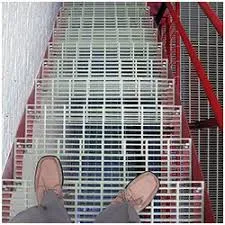
-
 Afrikaans
Afrikaans -
 Albanian
Albanian -
 Amharic
Amharic -
 Arabic
Arabic -
 Armenian
Armenian -
 Azerbaijani
Azerbaijani -
 Basque
Basque -
 Belarusian
Belarusian -
 Bengali
Bengali -
 Bosnian
Bosnian -
 Bulgarian
Bulgarian -
 Catalan
Catalan -
 Cebuano
Cebuano -
 China
China -
 China (Taiwan)
China (Taiwan) -
 Corsican
Corsican -
 Croatian
Croatian -
 Czech
Czech -
 Danish
Danish -
 Dutch
Dutch -
 English
English -
 Esperanto
Esperanto -
 Estonian
Estonian -
 Finnish
Finnish -
 French
French -
 Frisian
Frisian -
 Galician
Galician -
 Georgian
Georgian -
 German
German -
 Greek
Greek -
 Gujarati
Gujarati -
 Haitian Creole
Haitian Creole -
 hausa
hausa -
 hawaiian
hawaiian -
 Hebrew
Hebrew -
 Hindi
Hindi -
 Miao
Miao -
 Hungarian
Hungarian -
 Icelandic
Icelandic -
 igbo
igbo -
 Indonesian
Indonesian -
 irish
irish -
 Italian
Italian -
 Japanese
Japanese -
 Javanese
Javanese -
 Kannada
Kannada -
 kazakh
kazakh -
 Khmer
Khmer -
 Rwandese
Rwandese -
 Korean
Korean -
 Kurdish
Kurdish -
 Kyrgyz
Kyrgyz -
 Lao
Lao -
 Latin
Latin -
 Latvian
Latvian -
 Lithuanian
Lithuanian -
 Luxembourgish
Luxembourgish -
 Macedonian
Macedonian -
 Malgashi
Malgashi -
 Malay
Malay -
 Malayalam
Malayalam -
 Maltese
Maltese -
 Maori
Maori -
 Marathi
Marathi -
 Mongolian
Mongolian -
 Myanmar
Myanmar -
 Nepali
Nepali -
 Norwegian
Norwegian -
 Norwegian
Norwegian -
 Occitan
Occitan -
 Pashto
Pashto -
 Persian
Persian -
 Polish
Polish -
 Portuguese
Portuguese -
 Punjabi
Punjabi -
 Romanian
Romanian -
 Russian
Russian -
 Samoan
Samoan -
 Scottish Gaelic
Scottish Gaelic -
 Serbian
Serbian -
 Sesotho
Sesotho -
 Shona
Shona -
 Sindhi
Sindhi -
 Sinhala
Sinhala -
 Slovak
Slovak -
 Slovenian
Slovenian -
 Somali
Somali -
 Spanish
Spanish -
 Sundanese
Sundanese -
 Swahili
Swahili -
 Swedish
Swedish -
 Tagalog
Tagalog -
 Tajik
Tajik -
 Tamil
Tamil -
 Tatar
Tatar -
 Telugu
Telugu -
 Thai
Thai -
 Turkish
Turkish -
 Turkmen
Turkmen -
 Ukrainian
Ukrainian -
 Urdu
Urdu -
 Uighur
Uighur -
 Uzbek
Uzbek -
 Vietnamese
Vietnamese -
 Welsh
Welsh -
 Bantu
Bantu -
 Yiddish
Yiddish -
 Yoruba
Yoruba -
 Zulu
Zulu
Innovative Applications of Fiberglass in Modern Industry and Construction Technologies
Understanding Fiberglass Stacks Applications, Benefits, and Innovations
Fiberglass stacks have gained prominence in various industries due to their unique properties and versatility. These structures, primarily used for emissions control and environmental protection, offer a combination of strength, lightweight characteristics, and resistance to corrosion. This article delves into the significance of fiberglass stacks, their applications, benefits, and the innovations shaping their future.
What are Fiberglass Stacks?
Fiberglass stacks are vertical structures crafted from fiberglass-reinforced plastic (FRP). This composite material is made by combining glass fibers with a polymer matrix, resulting in a product that is not only lightweight but also resistant to harsh environmental conditions. They are primarily used to vent exhaust gases from industrial processes, ensuring compliance with environmental regulations and minimizing air pollution.
Key Applications
Fiberglass stacks are utilized in a variety of sectors, including
1. Power Generation In power plants, fiberglass stacks are crucial for safely dispersing flue gases from boilers and turbines. Their resistance to high temperatures and corrosive gases makes them ideal for this application.
2. Chemical Processing Chemical factories often release volatile organic compounds (VOCs) and other harmful emissions. Fiberglass stacks help in channeling these gases while maintaining structural integrity over time.
3. Waste Management In waste incineration facilities, fiberglass stacks play a vital role in controlling emissions. They effectively manage the exhaust from the combustion of waste materials, contributing to cleaner air.
4. Oil and Gas The oil and gas industry relies on fiberglass stacks to vent gases from drilling and refining operations. Their lightweight nature allows for easier installation in remote locations.
5. Pharmaceuticals In pharmaceutical manufacturing, controlling airborne contaminants is critical. Fiberglass stacks facilitate the safe disposal of gases generated during chemical reactions.
Benefits of Fiberglass Stacks
Fiberglass stacks offer numerous advantages over traditional materials such as steel or concrete
fiberglass stack

- Corrosion Resistance One of the main benefits of fiberglass is its outstanding resistance to corrosion. This characteristic extends the lifespan of stacks in environments where acid gases and other corrosive agents are prevalent.
- Lightweight Fiberglass is significantly lighter than metal options, making installation easier and more cost-effective. This characteristic is especially beneficial in areas where heavy lifting equipment is not available.
- Thermal Resistance Fiberglass can withstand high temperatures, which is essential for stacks that deal with hot exhaust gases. This resilience leads to lower maintenance costs and longer operational periods.
- Reduced Emissions By properly channeling and dispersing exhaust gases, fiberglass stacks help industries meet stringent environmental regulations, reducing their ecological footprint.
- Cost-Effectiveness The combination of lower installation costs and reduced maintenance makes fiberglass stacks an economically viable option for many businesses.
Innovations in Fiberglass Stack Technology
As industries continue to evolve, so does the technology behind fiberglass stacks. Recent innovations include
- Advanced Resin Systems New resin formulations improve the chemical resistance and durability of fiberglass stacks, allowing them to last longer in harsh environments.
- Design Improvements Computational fluid dynamics (CFD) modeling helps in optimizing stack designs for maximum efficiency in gas dispersion, ensuring pollutants are effectively managed.
- Integration of Sensors The incorporation of monitoring sensors into fiberglass stacks allows real-time tracking of emissions, helping operators to ensure compliance with environmental standards.
- Sustainability Initiatives Manufacturers are exploring the use of recycled materials in the production of fiberglass stacks, aligning with global sustainability goals.
Conclusion
In an era where environmental responsibility is paramount, fiberglass stacks stand as a critical component in multiple industries’ efforts to manage emissions effectively. With their myriad benefits—such as corrosion resistance, lightweight construction, and cost-effectiveness—they embody the future of pollution control technology. As innovations continue to emerge, fiberglass stacks will likely play an even more significant role in shaping a cleaner and more sustainable industrial landscape. Their adaptability across various applications showcases the importance of choosing the right materials for ensuring a greener future.









